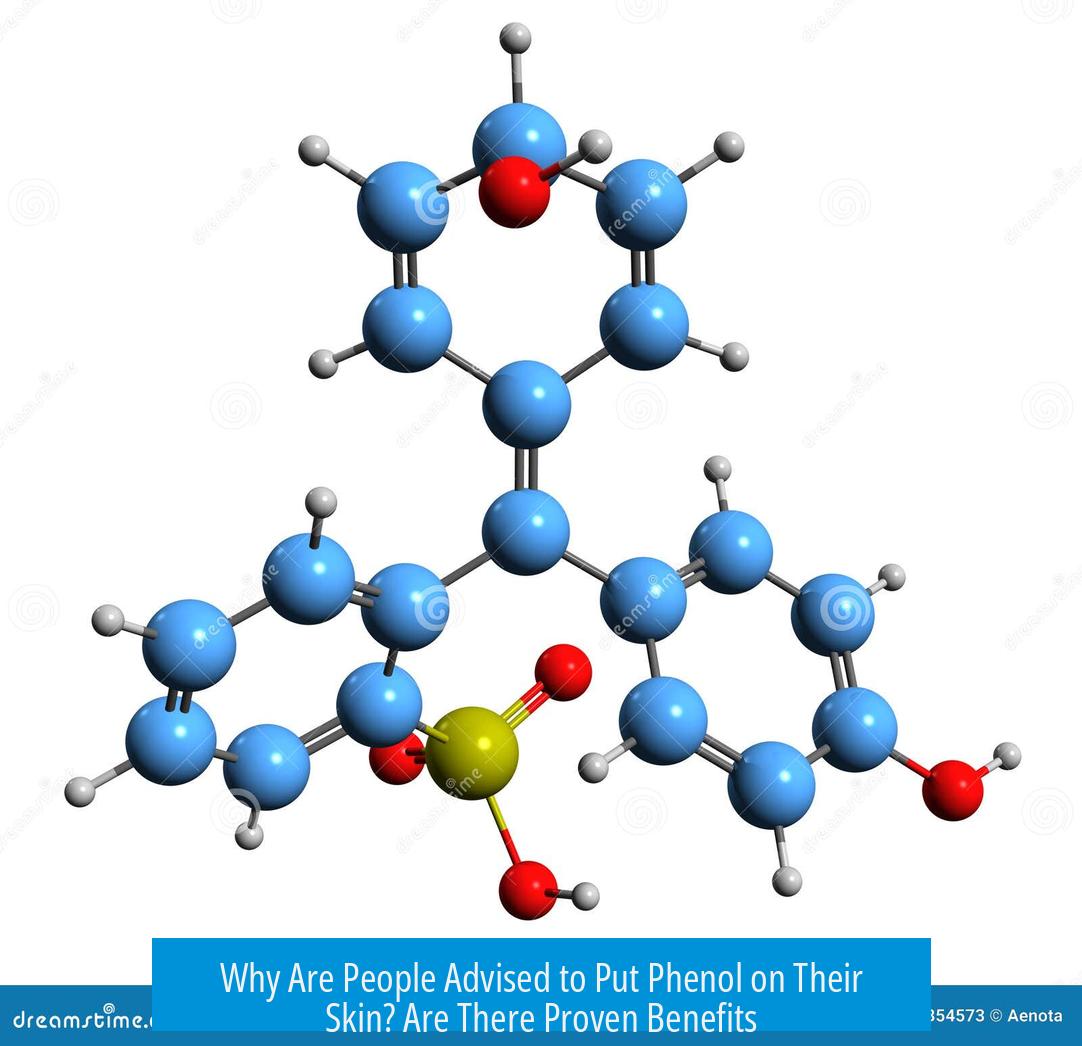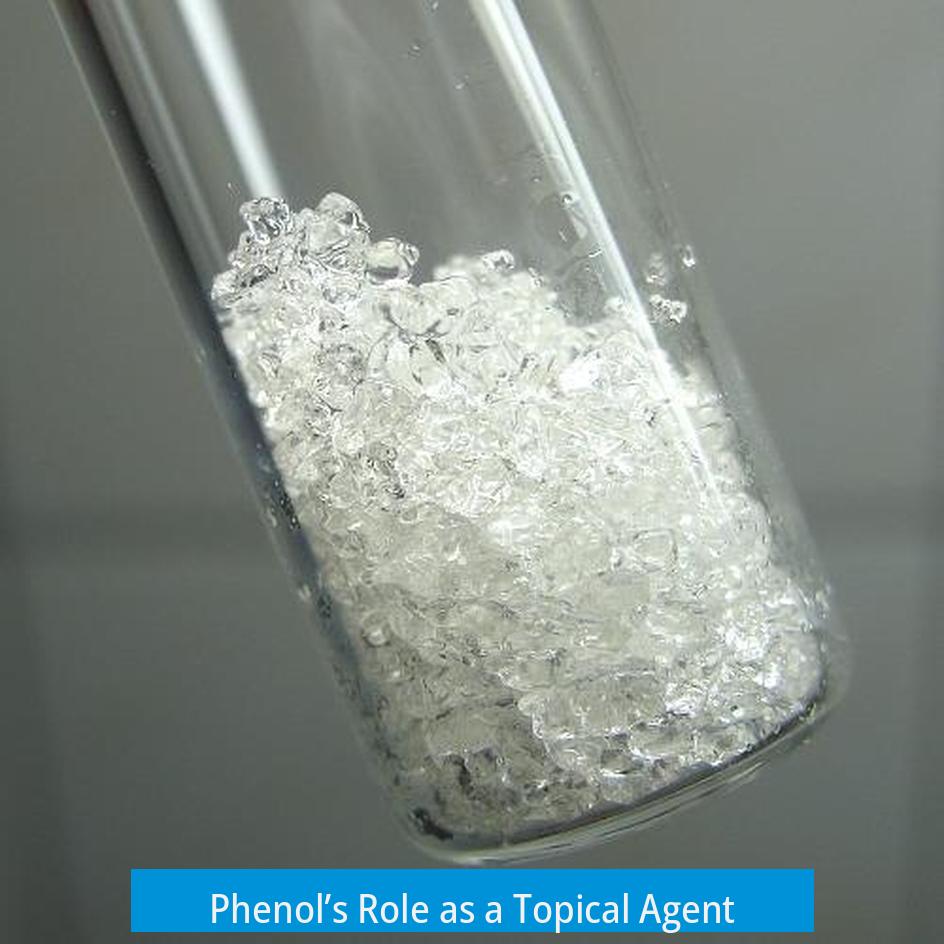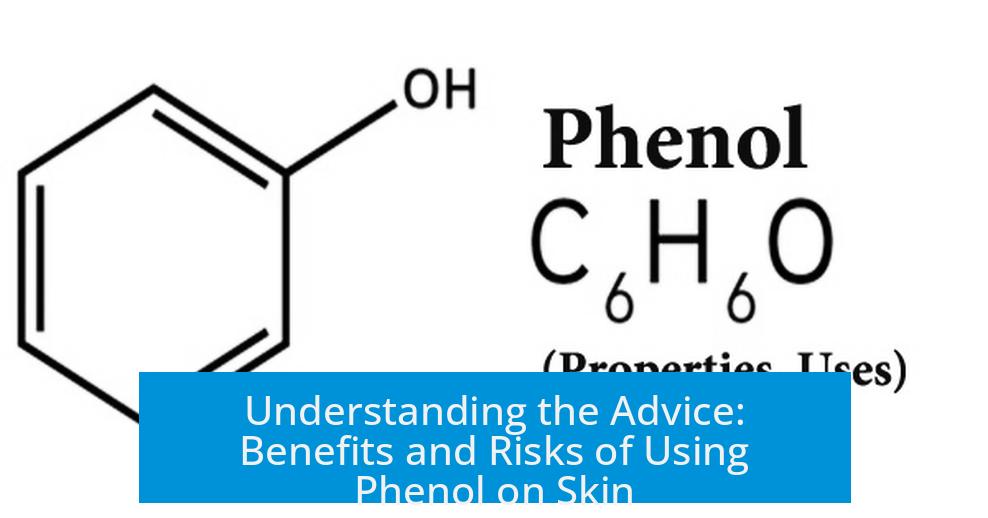Why Are People Advised to Put Phenol on Their Skin? Are There Proven Benefits?

Phenol is used in low concentrations as a topical analgesic and antiseptic, providing numbing relief for pain such as sore throats, minor skin irritations, and canker sores. Its benefits derive from its ability to numb pain and disinfect at safely regulated doses.
Phenol’s Role as a Topical Agent

Phenol has a long history as a disinfectant and antiseptic. Low concentrations appear in pharmaceutical and cosmetic products for their numbing and antimicrobial effects. Examples include:
- Throat sprays (e.g., Chloraseptic) containing about 1.4% phenol to relieve sore throats.
- Lip balms like Carmex, which use phenol for mild analgesic action.
- Over-the-counter topical analgesics for minor mouth and throat discomforts.
The US Food and Drug Administration (FDA) approves phenol as a topical analgesic at concentrations below 1.5%. At these levels, phenol provides a weak local anesthetic effect without significant toxicity.
Proven Benefits of Phenol on the Skin
- Local Anesthesia: Phenol temporarily numbs nerve endings, reducing pain sensations in minor injuries or mucosal irritation.
- Antiseptic Action: It disrupts bacterial cell walls, serving as an effective antimicrobial agent in low doses.
- Cosmetic and Therapeutic Use: Some skin treatments use phenol in controlled amounts to promote peeling or treat skin conditions, although phenol is banned from many cosmetic products in Europe due to safety concerns.
The Hazard of Phenol on Skin Contact
Phenol is hazardous, especially in concentrated forms. The hazard statement H311 applies specifically to phenol’s contact risk with skin, warning of serious toxicity. Concentrated phenol can cause:
- Severe chemical burns through proteolytic tissue damage.
- CNS depression leading to systemic toxicity and possible fatality.
- Numbness that delays awareness of injury severity.
These dangers arise because phenol penetrates the skin rapidly due to its solubility in fatty tissues, making skin an ineffective barrier.
Concentration and Dosage Determine Safety
The toxicity of phenol varies with concentration and exposure duration. Key points include:
- The dermal LD50 (lethal dose for 50% of subjects) is approximately 650 mg/kg, indicating it requires a certain quantity to be fatal.
- FDA-regulated products keep phenol under 1.5%, a level considered safe for topical use.
- Higher concentrations (5–7%) can dissolve tissue on contact and are dangerous.
- Repeated or prolonged exposure to phenol, even at low doses, can cause skin irritation or systemic effects.
In lab environments where phenol is used in pure or molten form, protective equipment such as gloves and face shields is essential to prevent harmful exposure.
Regulatory and Safety Framework
Regulations limit phenol’s concentration in consumer products to balance benefit and risk. For example:
- FDA permits phenol use in certain over-the-counter topical analgesics at ≤1.5% concentration.
- Phenol is banned in cosmetics in the European Union due to its high acidity and toxicity risks.
- Users are advised to select phenol-containing products carefully and consult healthcare providers when necessary.
Common Misconceptions and Clarifications
Confusion often arises around phenol’s dangers because of concentration differences. Not all products with phenol pose the same hazard. Some points to clarify:
- Phenol’s toxicity is nonlinear; small amounts do not carry the same risks as concentrated phenol.
- “The dose makes the poison.” Many substances are harmful in high quantities but safe at low doses.
- Other common chemicals (e.g., acetic acid) have hazard statements similar to phenol but are routinely ingested or used safely.
- The numbing effect of phenol may mask skin damage, necessitating caution during use.
Comparison with Related Chemicals
Like phenol, substances such as menthol and essential oils have topical analgesic effects but also pose risks at higher doses. Phenol’s immediate tissue-damaging ability at high concentrations is distinctive and necessitates stricter safety measures.
Summary of Key Points
- Phenol is used on skin in low concentrations for its antiseptic and numbing properties.
- FDA approves phenol under 1.5% for topical analgesic products like throat sprays.
- Hazard H311 refers to concentrated phenol, which can cause serious skin burns and systemic toxicity.
- Concentration and dose govern safety; dilute phenol products are generally safe with proper use.
- Protective measures and regulatory limits help reduce risks of phenol exposure on skin.





Leave a Comment